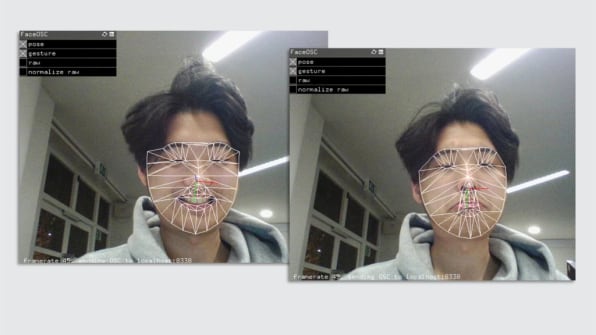
This is a wonderful idea. We know that forcing a smile will actually adjust one's mood to the better. Setting up an automatic door to insist on just that is going to be terribly useful. We may end up having everyone walking around with smiles on their faces.
This actually induces like behavior which is to everyone's health and well being.
We barely understand just how reactive our moods are to cues from other persons. We do not want to think this is true but it is.
The most powerful effect that i have discovered is that when a man has become very angry with a woman, that anger will literally switch off the moment he forces his eyes down the that woman's breasts. It is really uncanny and i do suggest men to try this. Better yet women, if you are in a anger spell with your better half, ask them to lower their eyes to your breasts. then calm down before either of you say anything else.
It is a shock to discover how easily that anger is physically manipulated in a way that has zero to do with your 'conversation'
To Interact With This Interface, Just Smile
In this uncanny prototype, you grin to open a door. It’s a glimpse of how machine learning is learning to read our emotions.
The smile:
It’s a universal, biological expression of happiness and joy. But what
if your smile–or frown–was the basis for more than just how you
interacted with your peers? What if certain elements of your environment
required you to communicate with your facial expressions?
University
of London masters student Freddie Hong is exploring how our faces–and
specifically, our smiles–could serve as an interface. For a class on
physical computing at Goldsmiths College, Hong built a connected door
that only opens when you’re smiling, thanks to facial recognition
software. “The focus of this project was to provide the audience an
experience of what it feels like to have your emotions read by the
computer,” he tells Co.Design in an email.
While developing the project and testing out the door, Hong noticed that
being forced to smile made some users uncomfortable. But instead of
tweaking the interface to make the smile more like a “button” that users
could quickly “push,” he actually lengthened the time it took to read
each user’s smile. This intentionally compounded the feeling
of awkwardness–and drew attention to the fact that the machine is
analyzing the user’s face.
The Smiling Door points to the next
wave of emotive technology, which will use facial recognition software
to analyze the difference between a smile, a grimace, and a frown.
That’s something the startup Affectiva,
an offshoot of MIT Media Lab that uses advanced facial recognition to
track and analyze emotions, is already doing. Microsoft, too, has its
own Emotion API
that developers can use to add emotion-based context to their products.
Embedding emotional awareness into our products seems like the logical
next step for UX design–regardless of how invasive or manipulative it
may be.
No comments:
Post a Comment